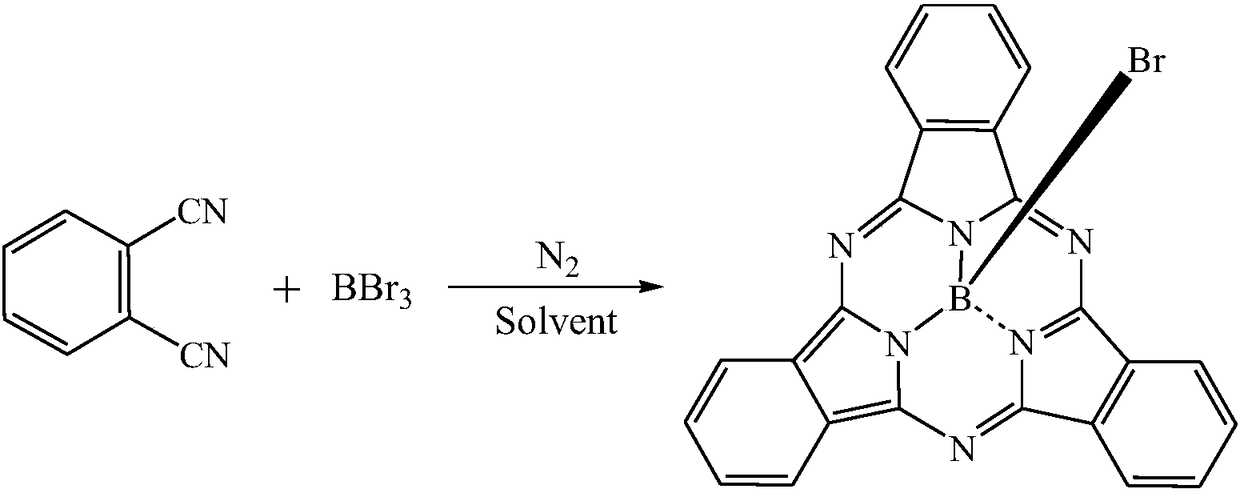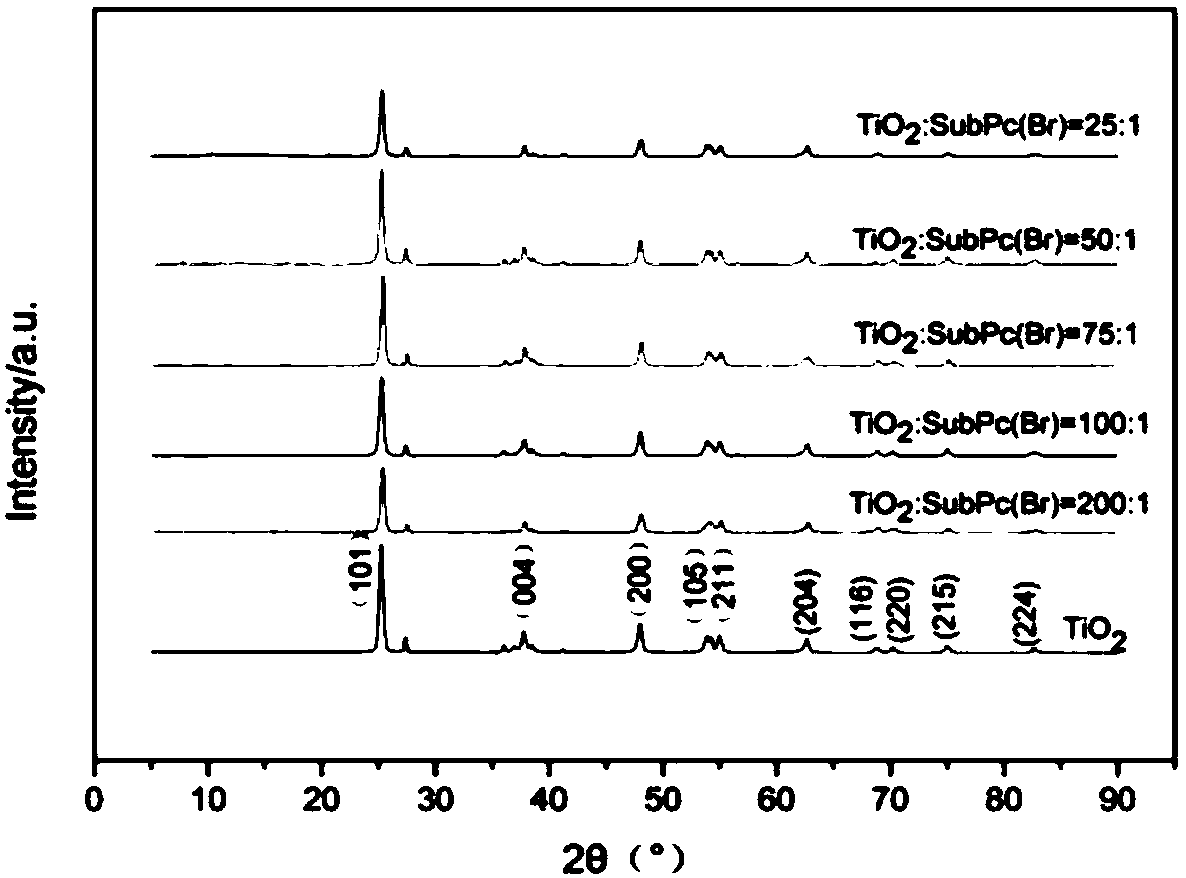Subphthalocyanine/titanium dioxide nano photocatalyst and preparation method and application thereof
A nano-photocatalyst and titanium dioxide technology, applied in the field of photocatalysis, can solve the problems of organic pollutants that have not been seen, and achieve the effects of pollution-free and recyclable raw materials, simple preparation methods, and less raw materials
- Summary
- Abstract
- Description
- Claims
- Application Information
AI Technical Summary
Problems solved by technology
Method used
Image
Examples
preparation example Construction
[0046] The preparation method of above-mentioned subphthalocyanine / titanium dioxide nano photocatalyst comprises the following steps:
[0047] S1. Take 67mL of absolute ethanol and place it in a 100mL beaker, slowly add 17mL of n-butyl titanate dropwise into it while stirring, and then add 6mL of triethanolamine to inhibit the rapid hydrolysis of n-butyl titanate. After the mixture was stirred for 50 min, anhydrous ethanol: deionized water = 10:1 (volume ratio) mixture was added dropwise, and the reaction system was stirred for 3 h to completely hydrolyze n-butyl titanate to obtain a uniform and clear orange-yellow sol. The sol was aged and placed in a muffle furnace, and calcined at 450° C. for 5 hours to obtain titanium dioxide particles. Finally, the obtained titanium dioxide particles are ground into powder to obtain nano-TiO 2 White powder.
[0048] S2. The whole reaction needs to be carried out under strict anhydrous and oxygen-free conditions. The reaction route is as...
PUM
| Property | Measurement | Unit |
|---|---|---|
| Absorbance | aaaaa | aaaaa |
Abstract
Description
Claims
Application Information
 Login to View More
Login to View More - R&D
- Intellectual Property
- Life Sciences
- Materials
- Tech Scout
- Unparalleled Data Quality
- Higher Quality Content
- 60% Fewer Hallucinations
Browse by: Latest US Patents, China's latest patents, Technical Efficacy Thesaurus, Application Domain, Technology Topic, Popular Technical Reports.
© 2025 PatSnap. All rights reserved.Legal|Privacy policy|Modern Slavery Act Transparency Statement|Sitemap|About US| Contact US: help@patsnap.com



